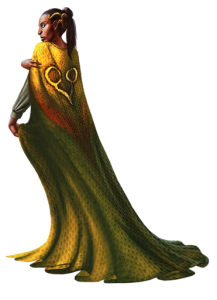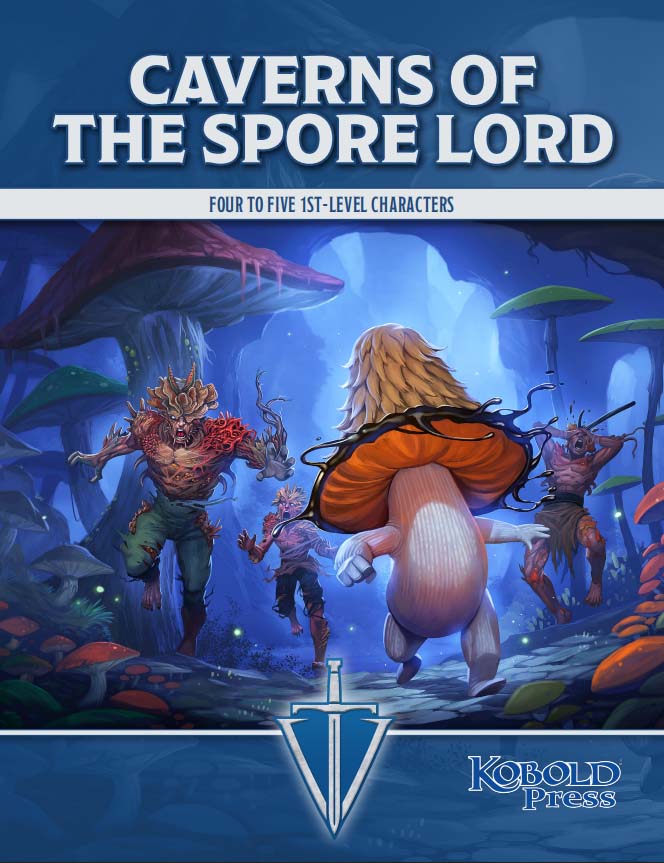
Some locations—the wizard’s tower, the sunken temple, the haunted house—appear repeatedly in stories and adventures. In this series, we’ll explore the archetypal lost temple, playing with or defying tropes, and presenting rules and ideas to bring these locales to life and to set you up for success when putting them into your game.
Read more articles in this series!
No More Prayers
The thing about the “temple” aspect of “forgotten temple” is the implication that the location used to be a center of worship for someone. Deciding who that someone is helps inform the location’s motifs (and the contents of rambling curses scribbled on walls), and can inform the kind of story, mood, and theme at play in the location.
It’s possible to have a forgotten temple dedicated to an active deity, but this post revolves around a question about what happenswhen a deity falls into obscurity.
Forgotten, but not Gone
The following hooks can serve as a springboard for the possibilities and story ramifications of how your lost deity might engage with explorers and even beyond the temple:
- The deity is not dead, but in stasis without faith to power it. When its name is uttered again (or an ancient prayer spoken from some dusty tablet), the deity stirs. Does it engage with the explorers directly—persuasively or violently—to get their aid in reinstating worship? Does it help the explorers with its knowledge or remaining power for a greater purpose? Or does it slip into the explorers’ minds, riding along when they leave to find an opportunity to crawl back to life?
- The deity’s lack of worshippers has not destroyed it, but robbed it of its intelligence and purpose. It now haunts the temple in some cursed, monstrous form, viciously guarding the place with little memory of its own importance. Must it be put down or otherwise imprisoned? Or can some of the deity’s old identity be restored?
- The deity is dead and gone, but a relic or piece of knowledge remains as testament to its purpose. Is it trying to keep people away at all costs? Is the knowledge or item key to the god’s future rebirth? Or is this knowledge protected, to be found when it is needed to stop another cataclysm?
Ready-Made Divinities
Below are three general kinds of deities in keeping with archetypal “lost gods.” While presenting useful tropes to lean into, don’t be afraid to change things around—a forgotten snake deity could be a misunderstood rebel against a tyrant. An eldritch mad god could be more of a fey than a Lovecraftian entity. And a blood god could present as a proud god of war, convinced their bloody conquests were in service to the greater good.
Snake God
In typical lore, snake gods end up in all kinds of forsaken temples, from jungle ruins to desert tombs. Snakes get a bad rep as bringers of illness, temptation, and misfortune, so god-like figures that revolve around them tend to end up as the bad guy. Whether you want to lean into that reputation or have them be more misunderstood, there’s no denying snakes make for great imagery!
Forms and Purviews: Snakes, obviously. Snake gods use snake pits, giant snakes, and snake-like monstrosities, like basilisks, medusae, and lamias. Snake gods are often affiliated with the climate where they are found (such as desert or jungle) and govern such wholesome concepts as deception, temptation, poison, betrayal, and darkness.
Ideas: Forgotten snake gods are a great excuse to drop a unique snake-like monstrosity in the bowels of a temple for explorers to find! Or, if intelligence remains in the deity, they make good candidates to try and persuade, tempt, or to “ride along” with the explorers to ignite their rebirth.
Blood God
The dark side of gods of war, blood gods revel in sacrifice, slaughter, and destruction. These gods demand common sacrifices, pushing their followers for displays of bloody devotion lest its rapacious appetites turn to them. Temples to such deities often fall because such aggression either meets a bigger force or the god’s own brutality devastates its flock.
Forms and Purviews: Mighty predators and strong beasts renowned for rage are favored among these kinds of gods: bulls, eagles, lions, and wolves are possible manifestations. Blood gods love war, living sacrifices, fear, and conquest. Death, destruction, violence, and rage all fall into its destructive purviews.
Ideas: A temple littered with mad monsters is one way to go. Another possibility is bringing a blood god back to consciousness by uttering its name, long thought stricken from all records. The explorers face a terrible being wielding bloody promises and threats to regain power. Explorers may also delve into a blood god’s temple to find a legendary weapon . . . only to find it a cursed receptacle of the remains of that god’s consciousness, key to its rebirth.
Mad God
Maybe more easily classified as “eldritch beings”, these gods may not be mad themselves, but madness often follows in their wake. Temples to them are buried and forgotten, usually for the good of the whole world. Few remain active for long—their cultists tend to burn themselves out.
Forms and Purviews: Strange aberrations conforming to no known laws of nature are typical manifestations for such creatures. Also consider abstract forms like balls of light or shapeshifting glass. Such gods govern madness, yes, but also power, especially arcane power and knowledge, as well as secrets of time and space. Some are champions of chaos, or tied to dream realms and illusions unmoored from reality.
Ideas: A whispering madness to infect explorers in a mad god’s temple is very on-brand, something to take with them and spread the “faith” like an infection. They may also face a mad-yet-enchanting echo of the deity that gently encourages and prods them to let it in. It sounds more and more reasonable all the time. Such temples are prime locations for finding obscure lore, forbidden spells, or a bit of necessary (if dangerous) knowledge . . . which may give the mad god a foothold in the world.
Ready to make your own forgotten temple adventure? The Kobold Guide to Dungeons provides deep insight on the hows and whys of dungeon design. Expert game designers like David “Zeb” Cook, Dominique Dickey, and James Sutter help make your dungeons more interesting, more challenging, and more FUN.
Get Kobold Guide to Dungeons today!

